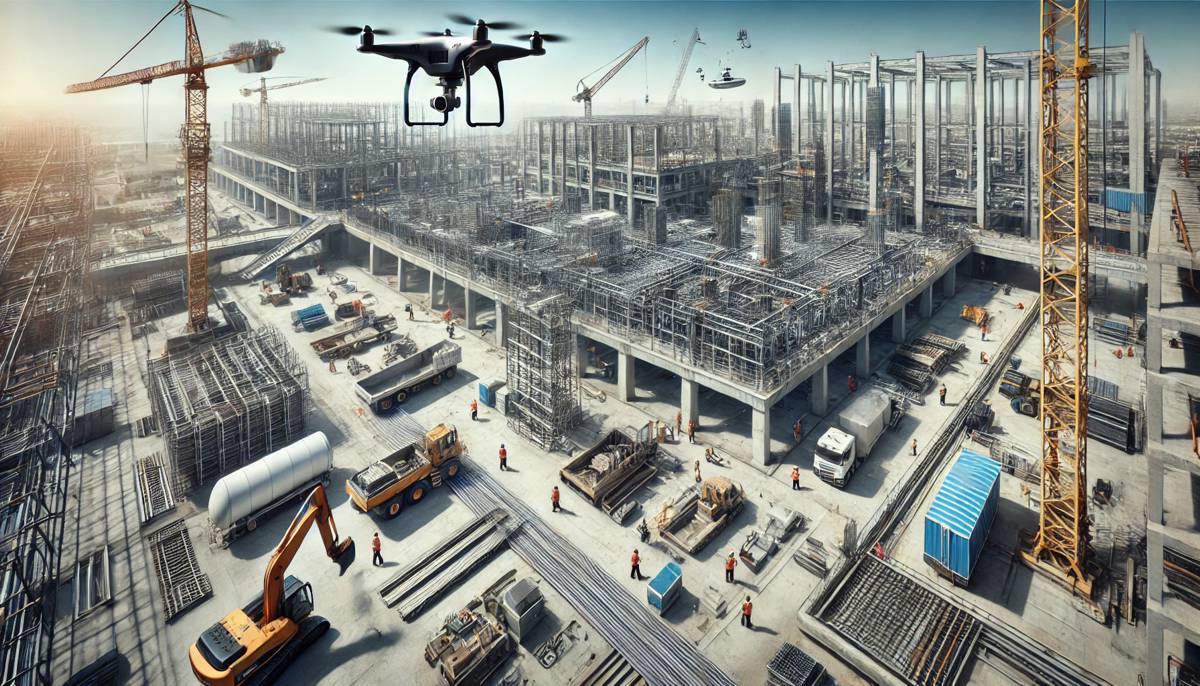Building the Future with Innovation and Growth
In a world where the construction industry serves as a linchpin for economic development, innovation has become the key to sustaining growth and navigating the challenges ahead.
This sentiment resonates strongly in a recent report written by Columbia Business School with the support of Trimble, titled Innovation and Growth in the Lynchpin Industries. The whitepaper delves into the transformative trends that are reshaping the construction sector and outlines strategic approaches that industry leaders must adopt to stay ahead in a rapidly evolving landscape.
Construction is the Engine of Economic Growth
The construction industry is undeniably the backbone of global economies, driving development and contributing significantly to GDP in various regions. From residential buildings to vast infrastructure projects, construction is the engine that powers progress. As highlighted in Trimble’s whitepaper, this industry’s influence extends beyond physical structures, creating jobs, fostering innovation, and setting the stage for economic stability.
However, the industry is currently navigating a complex environment marked by labour shortages, escalating material costs, and increasing regulatory demands. Despite these challenges, opportunities abound for those who can leverage innovation and adapt to the changing landscape.
The Role of Technology in Construction
The construction sector is at the cusp of a technological revolution, as outlined in Trimble’s whitepaper. Advances in technology are not just influencing how structures are built but are fundamentally altering the processes behind their creation, leading to more efficient, sustainable, and cost-effective projects.
Building Information Modelling (BIM) and Digital Twins
At the forefront of this technological shift is Building Information Modelling (BIM). This digital tool enables the creation of comprehensive digital representations of physical structures, facilitating improved collaboration, planning, and execution throughout a project’s lifecycle.
According to Trimble’s research, the integration of digital twins—virtual counterparts of physical assets—into the construction process further amplifies these benefits, allowing for real-time monitoring and optimisation of building performance long after construction is completed.
Automation and Robotics
Automation is another critical trend transforming the construction landscape. Robotics and automated systems are increasingly being employed to handle repetitive and laborious tasks, significantly reducing both time and costs.
This shift not only addresses the ongoing labour shortages but also enhances safety and efficiency on job sites. As noted in the whitepaper, the adoption of robotics is expected to continue growing, with potential applications ranging from bricklaying robots to autonomous machinery for site preparation.
The New Sustainability Imperative
Sustainability is no longer a buzzword; it’s a mandate. The construction industry, responsible for a substantial portion of global carbon emissions, faces mounting pressure to adopt greener practices.
Trimble’s whitepaper stresses that the path to sustainability lies in embracing new technologies and methodologies that reduce environmental impact while maintaining economic viability.
Sustainable Building Materials
One approach to enhancing sustainability in construction is through the use of sustainable building materials.
Innovations in this area include the development of low-carbon concrete, recycled steel, and bio-based materials, which not only reduce the carbon footprint of construction projects but also contribute to the creation of healthier, more resilient buildings.
Energy Efficiency and Green Building Standards
In addition to material innovations, there is a growing emphasis on energy efficiency and adherence to green building standards. Tools such as energy modelling software and smart building technologies enable the design and construction of buildings that consume less energy and produce fewer emissions.
The whitepaper points to the increasing adoption of certifications such as LEED and BREEAM as evidence of the industry’s commitment to sustainability.
Addressing Labour Shortages with the Human Element
The construction industry is facing a critical shortage of skilled labour, a challenge that is exacerbated by the aging workforce and the reluctance of younger generations to enter the field.
Trimble’s whitepaper highlights the need for the industry to rethink its approach to labour, not just by automating tasks but by investing in training and development to attract and retain talent.
Training and Development
Investing in workforce development is crucial for the industry’s future. This includes providing training on the latest technologies, offering apprenticeships, and creating pathways for career advancement.
The whitepaper suggests that companies that prioritise employee development will not only address labour shortages but also foster a more engaged and productive workforce.
Attracting the Next Generation
To draw younger workers into the construction industry, it’s essential to change the narrative. By showcasing the technological advancements and opportunities for career growth, the industry can appeal to a tech-savvy generation that values innovation and impact.
Trimble’s whitepaper underscores the importance of industry partnerships with educational institutions to create programs that align with the skills needed for modern construction roles.
Navigating the Future for Strategic Growth in Construction
Looking ahead, the construction industry must navigate a landscape that is both challenging and full of potential.
The whitepaper from Trimble offers a roadmap for industry leaders, emphasizing the importance of strategic growth, which includes not only the adoption of new technologies but also a commitment to sustainability and workforce development.
Diversification and Risk Management
One strategy for growth is diversification. By expanding into new markets or offering a broader range of services, construction companies can mitigate risks and capture new opportunities. Trimble’s research highlights the benefits of adopting a diversified approach, which can provide a buffer against economic downturns and market volatility.
Collaboration and Partnerships
Another key to success in the evolving construction landscape is collaboration. Whether it’s forming partnerships with tech companies to integrate the latest innovations or working with government agencies to meet regulatory requirements, collaboration is essential for overcoming the challenges ahead.
The whitepaper emphasizes that successful companies will be those that can effectively collaborate across the value chain, from suppliers to clients.
Building on Innovation
As the construction industry continues to evolve, its success will hinge on the ability to innovate, adapt, and grow sustainably. The insights provided in Trimble’s whitepaper offer a clear blueprint for navigating the future, with technology, sustainability, and workforce development at the core of strategic growth.
By embracing these trends and addressing the challenges head-on, the construction industry can continue to play its vital role in global development, building not just structures, but a sustainable and prosperous future.




















